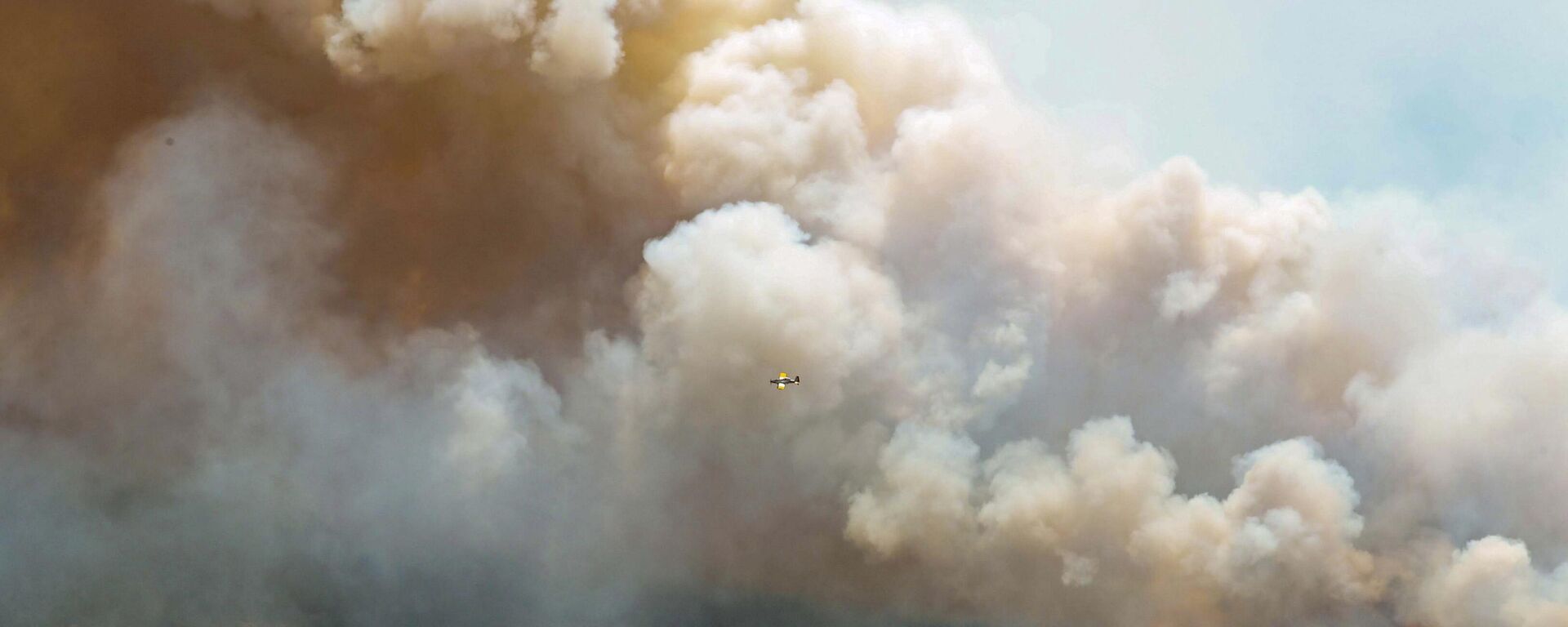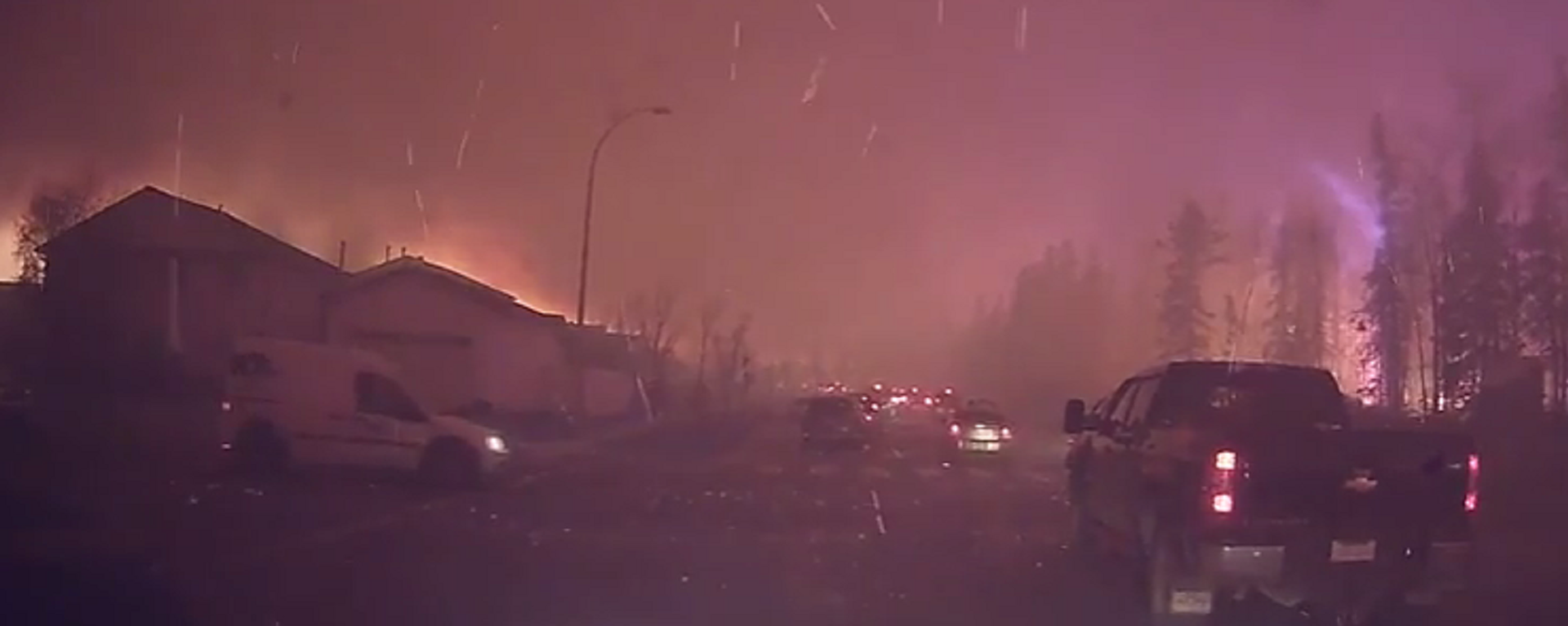https://sputnikglobe.com/20231004/smoke-from-historic-wildfires-in-canada-blanket-eastern-us-reach-florida-1113905410.html
Smoke From Historic Wildfires in Canada Blanket Eastern US, Reach Florida
Smoke From Historic Wildfires in Canada Blanket Eastern US, Reach Florida
Sputnik International
The relentless and unusually long-lasting wildfire season has seen the smoke travel as far south as South Florida, a region that had until now remained untouched by this environmental crisis.
2023-10-04T04:17+0000
2023-10-04T04:17+0000
2025-04-07T11:07+0000
beyond politics
canada
florida
wildfire
wildfires
us
quebec
orlando
viral news
https://cdn1.img.sputnikglobe.com/img/07e7/06/08/1111001588_0:320:3072:2048_1920x0_80_0_0_8f9070cf1e0a6a7fa449253c717e3952.jpg
People along the US Eastern Seaboard woke up to a surreal scene on Tuesday as they were greeted by hazy skies, a consequence of the relentless wildfire smoke originating from Canada. The 2023 wildfire season has proven to be both historic and unusually persistent, with the smoke's reach most recently extending as far south as Florida, a region that had thus far avoided the consequences of the Canadian wildfires.Air quality in many parts of the Florida peninsula took a hit, with AirNow.gov, the Environmental Protection Agency's air monitoring website, reporting code orange and code red levels of smoke pollution. Code orange signifies unhealthy conditions for sensitive groups, while code red indicates unhealthy conditions for everyone.Notably, both of the Sunshine State's Orlando and Jacksonville cities experienced code red air quality levels, which even reached as far south as Palm Beach County. The milky haze also obscured skies in Miami and Homestead.However, the smoke has also affected regions in the northeast and Mid-Atlantic, with the highest smoke concentrations being observed near the coast and along the Interstate 95 corridor.The trail of smoke can be traced back to the rapid expansion of firestorms in Canada during the final 10 days of September and complex atmospheric steering currents.It's anticipated that even though smoke concentrations were at their highest on Tuesday morning, additional haze may linger for the next few days.While varying levels of wildfire smoke have been passing over the northeast for approximately a week, most of it has remained at a sufficient altitude to not significantly impact air quality. However, low levels of pollution were observed around New York City. Smoke had thickened enough last week to produce sporadic code orange conditions in parts of Quebec and New England, with some areas in eastern Quebec even recording a full day of code red levels.Although Canada's typical fire season typically begins to ease in September and concludes by October, the last two weeks have witnessed an intense period of fire activity, with roughly a million acres burning - a size comparable to entire fire seasons in some years. Several active fires persist in provinces from western Canada to Quebec.Recent wetter conditions in the west have helped reduce the extreme fire risk and the number of uncontrolled blazes. However, forecasts predict a return to warm and dry conditions conducive to fires in the coming days.Meanwhile, record high temperatures in Ontario and Quebec may exacerbate ongoing fires near James Bay and other eastern regions before cooler weather finally arrives over the weekend. The situation remains fluid, with residents across the Eastern Seaboard and Florida bracing for the continuing impact of this unexpected and far-reaching wildfire smoke.
https://sputnikglobe.com/20230622/over-400-wildfires-burning-in-canada-213-out-of-control---emergency-preparedness-chief-1111409472.html
https://sputnikglobe.com/20230508/video-wildfires-ravage-canadas-alberta-force-evacuation-of-30000-residents-1110203793.html
canada
florida
quebec
orlando
Sputnik International
feedback@sputniknews.com
+74956456601
MIA „Rossiya Segodnya“
2023
News
en_EN
Sputnik International
feedback@sputniknews.com
+74956456601
MIA „Rossiya Segodnya“
Sputnik International
feedback@sputniknews.com
+74956456601
MIA „Rossiya Segodnya“
wildfires in canada, smoke in florida, south florida why smoke, how bad are canadian wildfires, americas wildfires,
wildfires in canada, smoke in florida, south florida why smoke, how bad are canadian wildfires, americas wildfires,
Smoke From Historic Wildfires in Canada Blanket Eastern US, Reach Florida
04:17 GMT 04.10.2023 (Updated: 11:07 GMT 07.04.2025) The relentless and unusually long-lasting wildfire season has seen wildfire smoke travel into the deep US southeast, a region that had until now remained largely untouched by the environmental crisis.
People along the US Eastern Seaboard woke up to a surreal scene on Tuesday as they were greeted by hazy skies, a consequence of the relentless wildfire smoke originating from Canada.
The 2023 wildfire season has proven to be both historic and unusually persistent, with the smoke's reach most recently extending as far south as Florida, a region that had thus far avoided the consequences of the Canadian wildfires.
Air quality in many parts of the Florida peninsula took a hit, with AirNow.gov, the Environmental Protection Agency's air monitoring website, reporting code orange and code red levels of smoke pollution. Code orange signifies unhealthy conditions for sensitive groups, while code red indicates unhealthy conditions for everyone.
Notably, both of the Sunshine State's Orlando and Jacksonville cities experienced code red air quality levels, which even reached as far south as Palm Beach County. The milky haze also obscured skies in Miami and Homestead.
However, the smoke has also affected regions in the northeast and Mid-Atlantic, with the highest smoke concentrations being observed near the coast and along the Interstate 95 corridor.
The trail of smoke can be traced back to the rapid expansion of firestorms in Canada during the final 10 days of September and complex atmospheric steering currents.
It's anticipated that even though smoke concentrations were at their highest on Tuesday morning, additional haze may linger for the next few days.
Last week, a weather pattern known as an omega block formed over central North America, featuring a sprawling zone of high pressure. Surrounding the high-pressure system, low-pressure areas were present to both the east and west.
Clockwise winds around the high-pressure system pushed smoke from western Canada across northern Canada and Greenland. Subsequently, the low pressure east of the high-pressure system over the northwest Atlantic pulled the smoke southward, ultimately reaching Florida.
Remarkably, this marked the southernmost extent that wildfire smoke has reached this year.
While varying levels of wildfire smoke have been passing over the northeast for approximately a week, most of it has remained at a sufficient altitude to not significantly impact air quality. However, low levels of pollution were observed around New York City.
Smoke had thickened enough last week to produce sporadic code orange conditions in parts of Quebec and New England, with some areas in eastern Quebec even recording a full day of code red levels.
Although Canada's typical fire season typically begins to ease in September and concludes by October, the last two weeks have witnessed an intense period of fire activity, with roughly a million acres burning - a size comparable to entire fire seasons in some years. Several active fires persist in provinces from western Canada to Quebec.
Recent wetter conditions in the west have helped reduce the extreme fire risk and the number of uncontrolled blazes. However, forecasts predict a return to warm and dry conditions conducive to fires in the coming days.
Meanwhile, record high temperatures in Ontario and Quebec may exacerbate ongoing fires near James Bay and other eastern regions before cooler weather finally arrives over the weekend. The situation remains fluid, with residents across the Eastern Seaboard and Florida bracing for the continuing impact of this unexpected and far-reaching wildfire smoke.




